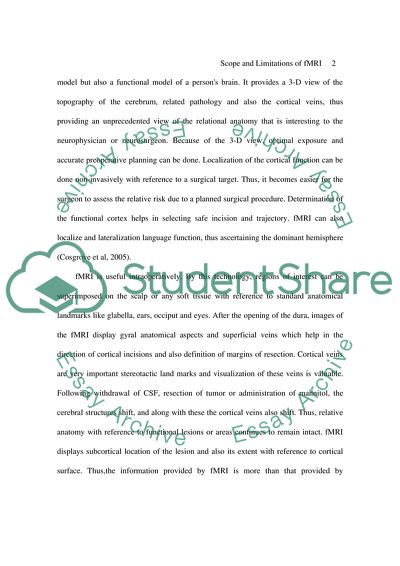Cite this document
(“Scope and Limitations of FMRI Research Paper Example | Topics and Well Written Essays - 2000 words”, n.d.)
Scope and Limitations of FMRI Research Paper Example | Topics and Well Written Essays - 2000 words. Retrieved from https://studentshare.org/technology/1747073-4-pages-on-scope-of-fmri-what-does-it-show-as-in-the-pictures-not-how-it-works-and-4-pages-on-the-limitations
Scope and Limitations of FMRI Research Paper Example | Topics and Well Written Essays - 2000 words. Retrieved from https://studentshare.org/technology/1747073-4-pages-on-scope-of-fmri-what-does-it-show-as-in-the-pictures-not-how-it-works-and-4-pages-on-the-limitations
(Scope and Limitations of FMRI Research Paper Example | Topics and Well Written Essays - 2000 Words)
Scope and Limitations of FMRI Research Paper Example | Topics and Well Written Essays - 2000 Words. https://studentshare.org/technology/1747073-4-pages-on-scope-of-fmri-what-does-it-show-as-in-the-pictures-not-how-it-works-and-4-pages-on-the-limitations.
Scope and Limitations of FMRI Research Paper Example | Topics and Well Written Essays - 2000 Words. https://studentshare.org/technology/1747073-4-pages-on-scope-of-fmri-what-does-it-show-as-in-the-pictures-not-how-it-works-and-4-pages-on-the-limitations.
“Scope and Limitations of FMRI Research Paper Example | Topics and Well Written Essays - 2000 Words”, n.d. https://studentshare.org/technology/1747073-4-pages-on-scope-of-fmri-what-does-it-show-as-in-the-pictures-not-how-it-works-and-4-pages-on-the-limitations.


